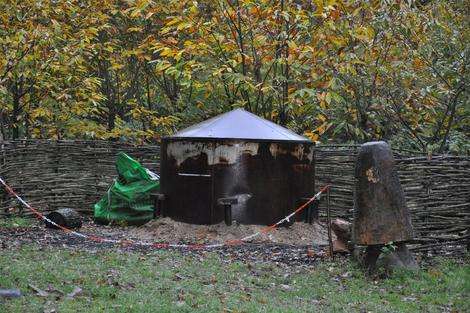Not just a pretty space

The magnificent plants at Oxford University's Botanic Garden and Harcourt Arboretum are always popular with visitors, but many people don't realise that they also have great scientific value.
Beautiful seasonal blooms conceal the secret lives of less conspicuous plants and trees used by university scientists for all kinds of research.
From the material used by nesting crows to make tools to the latex in trees and plants, researchers have made use of a wide range of plants across the two sites.
'Research plants are hiding in plain sight all over the place,' says Alison Foster, Senior Curator of the Botanic Garden and Arboretum. 'Many small flowers tucked away at ground level have been planted by biologists, and a lot of the trees are used in all kinds of research.'
When plant scientists want to see how certain plants, insects or birds cope outside of the lab, the Garden and Arboretum provide ideal natural environments. Last year, researchers from the Zoology Department collected aphids from plants in both collections.
'I don't think anyone could object to people taking a few aphids away!' says Alison. 'It's great to hear from researchers who want to do these sorts of studies, and it often helps us out too. In the aphid study, the researcher sent us a list of the plant types and aphid numbers which is useful information for any gardener!'
The same group went on to study whether or not aphids' resistance to fungus could be inherited maternally. They set up a pilot scheme, placing aphid colonies with clover plants across selected plots in the Arboretum. These were accompanied by water butts bearing brief explanations and QR codes so that visitors could learn about the science being done.
'The Arboretum provides an excellent natural research area, with plenty of space for ecological experiments like this,' says Alison. 'But we also get other requests which you might not expect – for example, we provided fresh charcoal from the Arboretum's burner to the Archaeology department so they could compare it with ancient charcoal for dating.
'We recently had a group of staff from the university go to Japan to collect seeds from Japanese trees. Now we're going to be growing plants from these seeds to enhance our collections and showcase some of the biodiversity research that is happening in the Department of Plant Sciences.'
The Arboretum also plays a role in undergraduate teaching, giving biology students a natural environment to pilot research projects. Many projects, such as rapid survey techniques, are good for the Arboretum as well.
'It's clearly of great value to us if students are helping us to map the plants around the site,' explains Alison. 'Eventually, we hope to plot the entire Arboretum tree-by-tree, and develop full soil profiles so we know exactly where to plant certain species. Students get real experience of conducting surveys and we get useful results: it's a win-win.'
Provided by Oxford University



















